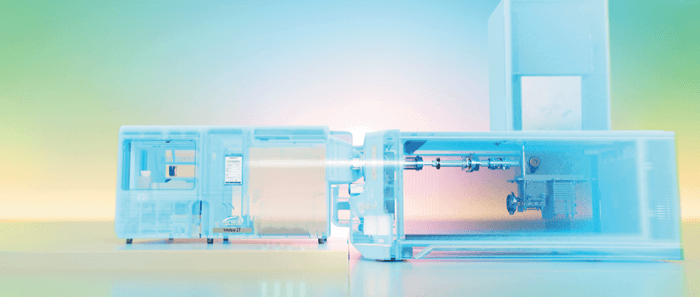At ASMS 2023, SCIEX announced the launch of its new system for intact protein and charge variant analysis: the Intabio ZT system. Here, Kristen Nields, Senior Scientist at The Janssen Pharmaceutical Companies of Johnson & Johnson, discusses common bottlenecks in the drug development pipeline, the importance of charge variant analysis and the benefits of the integrated mass analysis workflow provided by the Intabio ZT system.
What does your group do at Janssen?
We develop new modalities for different therapeutic areas. Once a biotherapeutic is deemed viable, it’s handed over to us for in-depth characterization. We look at disulphide bond reductions, biophysical properties (such as charge heterogeneity), mass analysis, size exclusion and so on before going through cell line selection. We then take the data, along with bioreactor data (such as titer, cell density and cell growth), and we pick a top clone. The top clone then goes into a master cell bank for the production of clinical material, which allows the development team to create efficient and scalable upstream and downstream processes for manufacturing.
Please explain the importance of charge variant analysis in the drug development pipeline.
Part of characterizing a protein involves examining its charge heterogeneity-posttranslational modifications affect the charge on both the acidic and basic sides of the protein. It is important to understand a protein’s charge profile and how to control it before upstream process development. The levers you pull to increase titer can impact charge heterogeneity, which then becomes locked in at harvest downstream and cannot be removed. In short, charge variant analysis is important for establishing a valid release method.

What are common bottlenecks in the current workflow?
The major bottleneck is method validation for imaged capillary isoelectric focusing (icIEF), which is the primary technique used for charge variant analysis. Why? Because the smallest process changes can alter the acidic or basic isoforms of the protein, affecting the peak areas and rendering the initial assay invalid. When this happens, a comprehensive investigation under good manufacturing practice guidance is required.
Determining the identity of the acidic peak using icIEF alone is challenging, and it can take 1 or 2 months to reach purification at the required levels for progression of clinical testing. This process leads to significant downtime, product holds, extensive quality control efforts and the potential need to engage with regulatory agencies to resolve the issue.
How does the Intabio ZT system address these challenges?
On the front end, it’s a typical icIEF system, so all the front-end components stay the same. This means existing validated icIEF methods can be directly applied to this system, so you will achieve the same charge profile. And that’s crucial because introducing new technologies for products that are in phase III development or already approved can create significant regulatory challenges, including side-by-side testing for up to 5 years to demonstrate comparability.
Once the sample comes off the microfluidic icIEF chip, it enters the mass spectrometer, where you can analyze the acidic and basic peaks in real time and identify each peak.
This new integrated workflow is a real game changer, serving as an intact protein multi-attribute methodology in the field of mass analysis. The Intabio ZT system gives you a real-time online icIEF-UV/ MS profile, which allows us to investigate the composition of each peak. This results in fewer investigations and faster identification compared to the alternative approach, which required fractionation and subsequent peptide mapping in the hopes of finding agreement with the icIEF-UV profile.
For years, we biochemists and chemists have wanted to know what’s under those peaks, and now we can find out-in real time-and that’s exciting!






